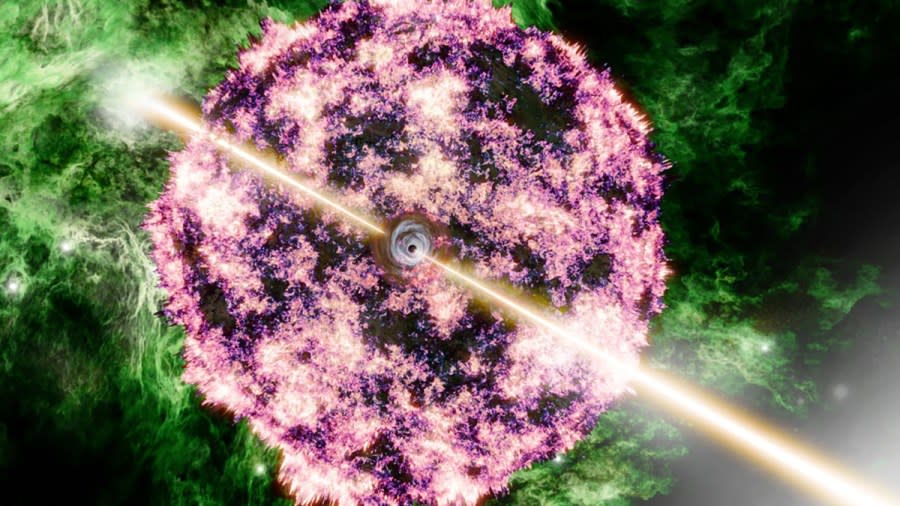Brightest gamma-ray burst of all time leads to both questions and answers, U of U researchers says

SALT LAKE CITY (ABC4) — Approximately a year and a half ago, a massive star collapsed and exploded 2 billion light-years away from Earth creating the brightest gamma-ray burst ever recorded, according to a newly released study.
The gamma-ray burst (GRB) blinded gamma-ray telescopes on Earth and shook the upper parts of our planet’s atmosphere, researcher Tanmoy Laskar said.
READ NEXT: Students walk out of Utah middle school to protest ‘furries’
Laskar, an assistant professor at the University of Utah and co-author in the study, said the burst was the brightest of all time, or B.O.A.T., by a factor of 10. Other researchers added that the burst was so bright it took months before they were able to see any sign of a supernova, as the afterglow continued to cover it up.
“The afterglow from a gamma-ray burst can shine for years and can make it difficult to see anything specific going on. Once the afterglow faded, Dr. Peter Blanchard at Northwestern University led the international effort,” Laskar said.
A team of researchers from universities nationwide, including the University of Utah, assembled to study the burst and its possible implications. They used the James Webb Space Telescope to make their observations, according to a press release.
The researchers were able to determine the cause of the burst to be a supernova, or the explosion of a massive star. However, other implications led to only more questions.
They said one possible implication of such a burst was its potential connection to the creation of heavy elements, something scientists are still looking for answers to.
“This event is particularly exciting because some had hypothesized that a luminous gamma-ray burst like the B.O.A.T. could make a lot of heavy elements like gold and platinum,” said Ashley Villar of Harvard University. “If they were correct, the B.O.A.T. should have been a goldmine. It is really striking that we didn’t see any evidence for these heavy elements.”
In addition to the burst not showing evidence of heavy elements, it also led to another mystery.

Researchers said that while it shattered records for being the brightest gamma-ray burst, the supernova looked normal when compared to similar events.
“You might expect that the same collapsing star producing a very energetic and bright GRB would also produce a very energetic and bright supernova. But it turns out that’s not the case. We have this extremely luminous GRB, but a normal supernova,” said Lead Researcher Peter Blanchard from Northwestern University.
This conclusion has led to a few hypotheses. Laskar believes the difference in the bright burst and the average supernova could be related to the “shape and structure of the relativistic jets.” He said a narrow jet may produce a more focused and brighter beam of light, as a flashlight would.
Blanchard suggested the galaxy’s environment may be another potential factor, however, they will need more data before they can draw conclusions, Laskar said.
“This was an event that Earth sees only once every 10,000 years,” Blanchard said. “It’s so exciting to observe such a rare astronomical phenomenon as the B.O.A.T. and work to understand the physics behind this exceptional event.”
To learn more about their research see the University of Utah’s press release or the study itself.
For the latest news, weather, sports, and streaming video, head to ABC4 Utah.


